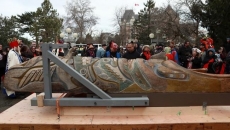Summary: The initiation rites or ceremonies without a doctrine get reduced to mere meaningless rituals. Without the Nash doctrine, the Vaisakhi for the Sikhs cannot be located as a transformative historical event. And it will not continue to be a revolutionary 1Force-1Ness paradigm to radically secure personal and public freedoms, from spiritual to political.
On 1 Vaisakh 1699, Guru Gobind Singh Sahib spoke to the great gathering at Sri Anandpur Sahib soon after initiating the first Five Lovers (Panj Piare) to Order of the Khalsa. A copy of the Guru’s address was sent to the Mughal emperor Aurangzeb by a news writer:
I wish you all to embrace one creed and follow one path, rising above all differences of the religions as now practiced. Let the four Hindu castes, who have different rules laid down for them in the Shastras, abandon them altogether and, adopting the way of mutual help and cooperation, mix freely with one another. Let no one deem himself superior to another. Do not follow the old scriptures. Let none pay heed to the Ganga and other places of pilgrimage which are considered to be holy in the Hindu religion, or worship the Hindu deities such as Rama, Krishna, Brahma, and Durga; but all should cherish faith in the teachings of Guru Nanak and his successors. Let the four castes receive my initiation (of the Double‐edged Sword). Eat of the same vessel, and feel no aloofness from or contempt for one another.
‐ Bute Shah alias Ghulam Muhi‐ud‐Din, Tawarikh‐i‐Panjab
On the Vaisakhi day, the initiated Sikhs renounced their previous occupations (krit nash) to work for Akal‐Purakh (Creative Personality); severed their family ties (kul nash) to become the family of the Guru; rejected their earlier creeds (dharm nash) for the Khalsa; replaced karma (karam nash) with the Grace; and stopped superstitions (bharam nash) for belief in Ik Oankar (One Force).
The Sikh memory, and several writers such as Teja Singh, Ganda Singh, Khushwant Singh, Harnam Singh Shan, J. D. Cunnigham, and M. A. Macullife, cite the aforesaid Nash doctrine. Giani Gian Singh in Tavarikh Guru Khalsa has a slight variant of Nash doctrine. He replaces Krit with Sharam and explains the shaming or embarrassment by society ends from that day onwards.
Guru Nanak Sahib’s revolutionary proclamation had the same “One Message” for all humanity alike (updesh chaun varna ko sanjha) in order to play the game of love (jau tau prem khelan ka chao). The men and women, regardless of their backgrounds, felt they were treated with dignity and respect. Many joined the revolution to enjoy the “Nanak’s Raj commenced on firm foundations of Eternal‐Fort” (nanak raj chalaia sach kot satani niv de).
The Guru gave the Sikhs new values, ideals, and practices, culminating in a sovereign identity. It separated them from the traditional society, its pilgrimages, and practices. Nam (Divine Identification) became the Sikh culture, and its Nash doctrine of five freedoms was introduced to end the bonds of old religions, traditions, and societies. It also confronted the Brahminical way by ending participation in their rituals, ceremonies, superstitions, prejudices, karmic acts, and restrictions on professional mobility.
The initiation by Khande-ki-pahul (Double-edged Immortality) was a process of transformation to bring about a new social order by wiping off (Nash) all distinctions of caste and creed. The Guru rejected all those beliefs, rituals, or ceremonies that recognized anything but IkOankar. To emphasize the complete independence and separateness of Sikh ideology, the Nash doctrine eliminated all that stood in the way of the sole Oneness. A complete break of the Sikh society with the past religious systems, traditions, and customs were made. The Guru accomplished this many‐sided transformation in bold defiance of age‐old beliefs, dogmas, and conservatism of traditional religions.
The Khalsa, inaugurated by Guru Gobind Singh Sahib, was unique both in its internal features and external form. In the words of Panjab historiographer J.D. Cunningham:
A living spirit possesses the whole Sikh people, and the impression of Gobind has not only elevated and altered the constitution of their minds but has operated materially and given amplitude to their physical frames.
Savayye details the Khalsa collective comprising individuals demonstrating particular traits:
That person who focuses on the Divine Light day and night and never puts even a little bit of faith in anyone else except the One. That person who has complete faith and love and even by forgetfulness, does not put any faith in fasting, worship of dead people, tombs of the dead people, and places of so-called saints. That person who does not pay attention to holy pilgrimage centers, charity, acts of pity, difficult meditation poses, and restraint except the One. And that person in whose heart the light of the Perfect One shines that one is to be recognized as an authentic member of the Khalsa.
The Guru saluted the authentic members, and as the great poet of Panjab, Prof. Puran Singh, reminds us:
In the constitution of the Khalsa commonwealth, the greatest act of genius of Guru Gobind Singh was when he transferred the divine sovereignty vested in him to the God‐ inspired people, the Khalsa.
The sovereignty was transferred to free dynamic personalities. The Khalsa is not merely the ones who have just undergone the initiation but also exhibit the Khalsa characteristics and behavior. And they became the Guru.
The Nash doctrine in 1699 freed Sikhs not only from the bondage of caste but also from hereditary occupational restraints or taboos, lineage barriers, superstitions, rituals, and the shadow of previous births. Initiation by Khande‐ki‐Pahul destroyed diverseness of caste, class, and profession. It empowered the “lowliest of the low” (nichi ho ati nich) masses and resulted in direct control and governance of the Panjab, which shook the roots of the prevalent passive and fatalistic society.

From thence onwards, the Guru Khalsa Panth and the Guru Granth Sahib represent the sovereignty of the Sikhs. Indubhushan Banerjee, whose works are known for Panjab and Sikh history, records:
The fetters of ritualistic religion were cut off and the captives were freed: and the foundations of the Spiritual Empire were laid. On these foundations was raised an imposing structure of Temporal Empire, blessed by Guru Gobind Singh’s never‐to‐be forgotten utterance: Raj Karega Khalsa [The Khalsa shall rule].
In today's transnational Sikh commonwealth, Vaisakhi celebrations are at the forefront of major Diaspora Sikh centers as well as the Homeland. Governments other than India are acknowledging the Sikh heritage of Vaisakhi with its Panjabi cultural influence. But, there’s utter silence on the “sovereign” dimension of Vaisakhi and its successor since Guru Gobind Singh Sahib: the Guru Khalsa Panth.
In Guru Granth Sahib, Vaisakhi becomes beautiful when the infinite wisdom enters the mind, and a Sikh prepares to submit to the Guru in totality.
Within the Sikhs masses, the Nash doctrine needs urgent revival such that the Panth’s leadership is shared as devised by the Guru by all Sikhs, not just males or Jatts as seen today.
The Sixth river of Panjab Bhai Vir Singh captures what the “Plume Adorned” Guru Gobind Singh Sahib tells Rani Panjab Kaur, beautifully transcreated by Inni Kaur:
Kalgian Vala speaks:
Listen, my beautiful, pleasing land,
I came to end the poison,
I gave Amrit (Immortal nectar) to your sons and woke them up.
They beautified and glorified you.
Listen, O! Fortunate mother.
Fold your hands before the Beloved,
Remain in Nam (Divine Identification),
Turn your back on Maya (Worldly Illusions) You will flourish.
Today, Nash Doctrine is almost forgotten. I paraphrase Sirdar Kapur Singh, the national professor of Sikhi, for those who desire to be seekers of Amrit (Immortality), to play the game of love, to become free:
Preparing the Sikhs to take new birth in the House of the Guru, to become a Knight of the Order of the Sovereign: Your birthplace will be the “Blessed Fort of the Sacred Uncut Hair,” and you will become a resident of the City of Joy. Your race, name, genealogy, nationality, religion, customs and beliefs, your subconscious pulls and tensions, and your previous destiny will be annihilated and transmuted. Believe it to be so, without a doubt and with the whole of your being. You will become a sovereign person owing allegiance to no earthly person or powers. Ik Oankar, the Timeless, becomes your only Sovereign to whom you owe allegiance, and the One alone is entitled to your devotion and worship. Your way to final fulfillment of human destiny, freedom, is laid down in the Revelations of the Guru Granth Sahib and the teachings of the Ten Gurus. Follow this Way and no other. Learn Gurmukhi script if you do not already know it (until the Guru Granth becomes available to you in your own language), and read or hear read out and explained the Guru Granth Sahib daily!
If you want to be born in the house of the Guru, are you ready to free your‐self from:
Family origin, caste or lineage?
Communal creeds or religions?
Embarrassing professions or occupations? Superstitions or doubts?
Karmic systems to feel the Perfection’s Grace?
Then, you may choose to adopt Guru Gobind Singh Sahib as your father and Mata Sahib Kaur as your mother. Prepare yourself to take Khande‐ki‐Pahul to become the resident of Anandpur Sahib. And from thence onwards, your primary allegiance will be to the Guru.
This is how you become part of the Khalsa Order as inaugurated on the Vaisakhi day of 1699. And the multiple loyalties end (Nash)!
Harinder Singh is a senior fellow at the Sikh Research Institute. He is an educator, thinker, and activist who tweets @1Force







